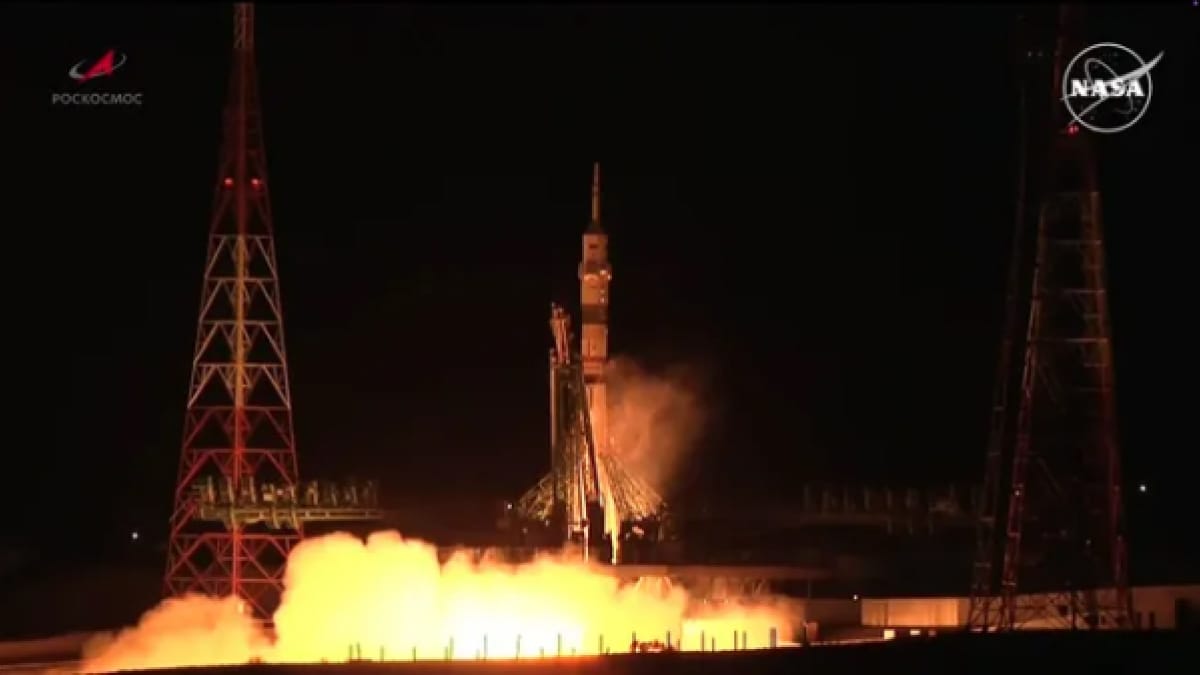If we’re going to find life on another world, Europa might just be our best bet. We think this icy moon of Jupiter has an ocean of water beneath its frozen surface, and it seems like this ocean might have the right ingredients for life. If we can find out for certain, it could be a game changer in our quest to determine if we are alone.
“Europa is the first ocean world, besides Earth, that we discovered in our solar system,” says Jonathan Lunine, the chief scientist of NASA’s Jet Propulsion Laboratory (JPL) in California. “We need to determine whether the ocean could support life.”
A mission to bring us that understanding is now about to begin. Called Europa Clipper, this NASA spacecraft—as tall as a giraffe and with solar panels as wide as a basketball court—will launch on a SpaceX Falcon Heavy rocket this month or early next. Its proposed launch date of October 10 was pushed back due to Hurricane Milton, and it will now launch no earlier than Sunday October 13. Two decades in the making, the $5.2 billion mission has one clear purpose: finding out if Europa ever was, or still is, habitable. The aim is to find out if some of the essential elements of life, such as carbon and nitrogen, are present in that ocean, says Lunine. “How much salt is present, and how much energy is available?”
About three hours after liftoff the spacecraft will deploy its solar panels and begin its journey to Jupiter. “Four months later we’re at Mars already,” says Jordan Evans at JPL, the project manager on Clipper. The spacecraft will use the gravity of the Red Planet, and then of Earth in 2026, to slingshot itself out into the solar system. An issue with the spacecraft’s transistors had threatened the launch, with NASA unsure if they would survive Jupiter’s radiation, but in September it said the mission was fine to go ahead. “There are no lingering concerns,” says Evans.
The spacecraft will take nearly six years to reach Jupiter in April 2030, a distance of some 1.8 billion miles (2.9 billion kilometers), overtaking a European spacecraft called JUICE in the process that is also on its way to Jupiter to study its other icy moons, including Ganymede, the solar system’s largest moon. “Europa is the size of Earth’s moon,” says Lunine. “Ganymede is the size of Mercury.”
Jupiter has around 100 moons, but its four largest, the Galilean moons—Io, Europa, Ganymede, and Callisto—are its most interesting. Io, orbiting closest to Jupiter, is battered by the planet’s intense radiation and gravity, making it the most volcanic body in the solar system. Ganymede, with its immense bulk, has its own magnetic field like Earth. And Callisto, the most remote of the four, has a heavily cratered surface that has been unaltered for billions of years.
But it is Europa that has garnered the most attention. The frozen moon’s orbit around Jupiter is slightly oblong-shaped, meaning it is pushed and pulled by the planet’s gravity. “Every 40 hours, the surface of Europa moves up and down by 30 meters,” says Jim Green, NASA’s former chief scientist. “That’s a 10-story building.”
These tidal forces appear to have melted some of the ice below Europa’s frozen surface, giving it a suspected vast ocean that surrounds its entire core, first hinted at in magnetic field data collected by NASA’s Galileo spacecraft that orbited Jupiter from 1995 to 2003. The exact depth and size of this ocean remains an open question, but it is likely at least several if not dozens of kilometers below the surface with at least twice the volume of all Earth’s oceans combined. “It is a chance to look at the potential for modern life,” says Britney Schmidt, a planetary scientist at Cornell University in New York. “There could be things living in the ocean right now.” Many other moons of our solar system, and likely moons around planets orbiting other stars too, are now thought to host oceans too.
About 20 years ago, scientists first pitched a mission to Europa to investigate this surprising ocean in more detail. For years those efforts were in vain. “Every year I would propose it,” says Green, who was head of NASA’s planetary division from 2006 to 2018. That was until 2013, when the Hubble telescope discovered a plume ejecting from Europa, possibly a spout of water from the subsurface ocean seeping through the ice and firing into space, something that has been observed multiple times on Saturn’s icy moon Enceladus.
That discovery was the kick-starter to launch a mission to Europa, because if a spacecraft could fly through a plume or study one from afar, it would be able to sample the ocean without having to dig beneath the ice. “Everyone got really excited about plumes,” says Schmidt, with some recent research suggesting Clipper might even be able to detect evidence of microbes if it were to fly through a plume, although that possibility remains debated. “The chance of getting a cell is pretty small,” says Lunine.
Photograph: NASA/JPL-Caltech
Jupiter, the largest planet in our solar system, emits a deadly amount of radiation, so much so that any spacecraft that spends too long in its vicinity will suffer failures and perish. To overcome this problem, Clipper will not actually orbit Europa itself, which is about 671,000 kilometers (417,000 miles) from the planet, but will instead be placed into a looping orbit around Jupiter that takes it far out of the radiation environment before coming back in. Clipper will communicate with Earth using a 3-meter-wide (10-foot) radio dish, but with a delay of 35 to 52 minutes owing to the distance between our two planets.
Over four years the spacecraft will perform 49 flybys of Europa as it dives into and back out of the Jovian system every 21 days, ranging from a distance of 2,700 kilometers (1,700 miles) to just 26 kilometers (16 miles) above Europa’s surface. The path of these flybys, which have already been mapped out, will let Clipper’s cameras produce our most detailed global map of Europa, down to 100 meters a pixel, and study its potential for habitability in the process.
The spacecraft has a radar that will attempt to penetrate the ice and reach the top of the ocean, telling us its depth. Even if it doesn’t achieve this, however, the radar could find pockets of water trapped in the moon’s ice, “potentially habitable places in the ice shell,” says Schmidt. The spacecraft will study the gravity of Europa to work out its internal structure, and will also look for evidence of salt in the ocean by measuring magnetic fields near Europa; salinity would increase the ocean’s electrical conductivity and change the behavior of Jupiter’s magnetic field around the moon.
Technicians inside the Payload Hazardous Servicing Facility at NASA’s Kennedy Space Center in Florida monitor movement and guide the agency’s largest planetary mission spacecraft, Europa Clipper, as a crane hoists it on a stand as part of prelaunch processing on Tuesday, May 28, 2024. Slated to launch aboard a SpaceX Falcon Heavy rocket later this year from Launch Complex 39A at Kennedy, Europa Clipper will help determine if conditions exist below the surface Jupiter’s fourth largest moon, Europa that could support life.NASA/Kim Shiflett
Seeing or sampling a plume from the ocean would be a “bonus for the mission,” says Lunine. If a plume is detected while Clipper is at Jupiter, there is a chance the spacecraft’s path could be slightly altered to fly through it, directly sampling the moon’s ocean. “There is a little bit of flexibility,” says Lunine. However, even if not, the spacecraft will sample Europa’s thin atmosphere, called an exosphere, which should contain hints of ocean material.
Europa’s surface is covered in chaos terrain: chasms and ridges that seem to be caused by the movement and cracking of the ice. In some locations water from the ocean seems to have seeped through, freezing as a brine on the surface. When heated by the sun, particles from this material can be evaporated into the exosphere, where they could be studied by Clipper and investigated for signs of organic material, the ingredients of life, although as with the potential plume sampling, any direct detection of life is unlikely.
“We will definitely be able to measure particles in the exosphere,” says Schmidt, “but this isn’t a life-detection mission. It’s setting the stage for going back.” Material on the surface or in Europa’s exosphere could also be linked to hydrothermal vents at the seafloor, openings where heated mineral-rich material such as silica flows out and which, on Earth, can act as hotbeds for life.
Photograph: NASA/JPL-Caltech/Johns Hopkins APL/Ed Whitman
If Clipper succeeds in showing that Europa is habitable, the next mission to the moon would almost certainly be a lander, something scientists have long clamored for. “Frankly I can’t believe we’re not already doing this,” says Schmidt. “We’ve got every single reason to believe this is an interesting place. It would be more surprising to ask why life is not here.”
This lander could touch down in a region on Europa’s surface where ocean material is known to be exposed and directly study it, looking for signs of life, or it could include some means to burrow down beneath the ice, perhaps with a drill or heating element.
Such a mission could be decades away. Until then, Clipper will tell us just how habitable we can expect worlds like Europa to be. In turn, that might have ramifications for our entire search for life in the cosmos. “We’re right at the crossroads between understanding how life might exist on ocean worlds and how those relate to ocean worlds around other giant planets all over the galaxy,” says Green. “This might be one of the top ways life starts.”


